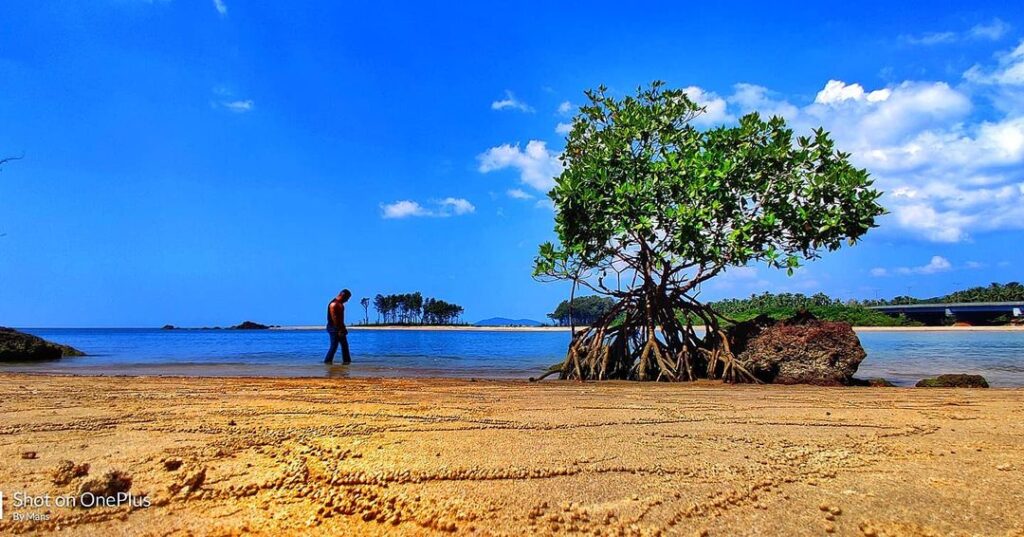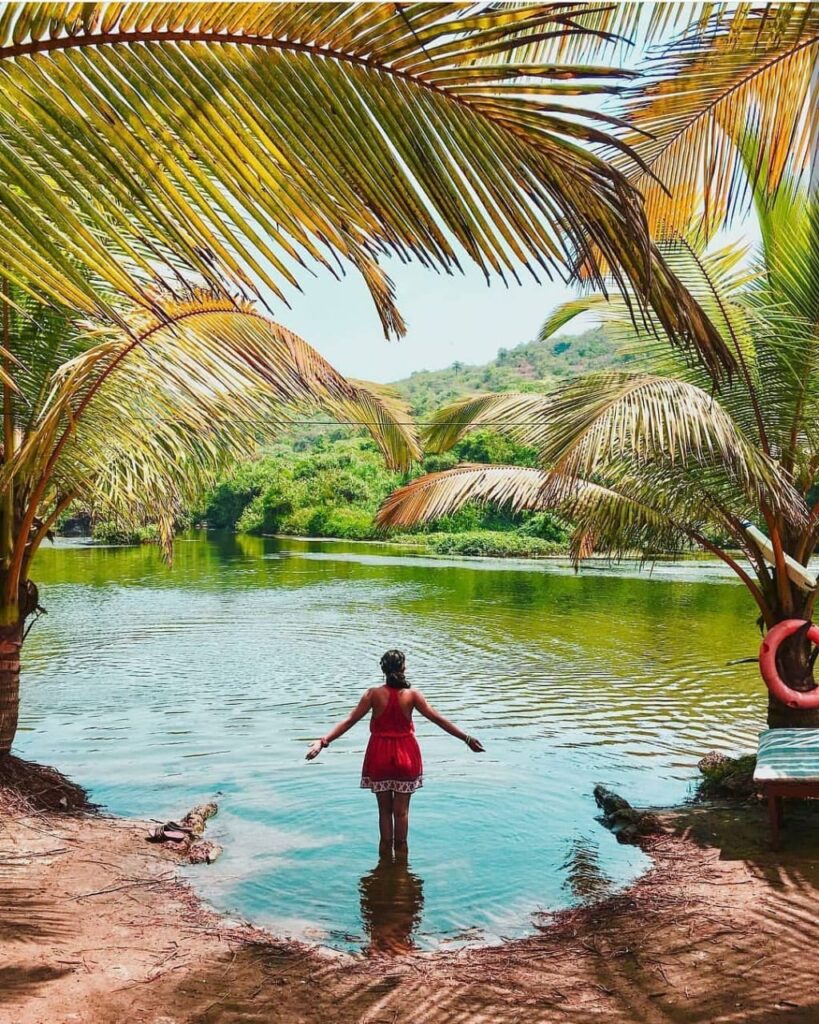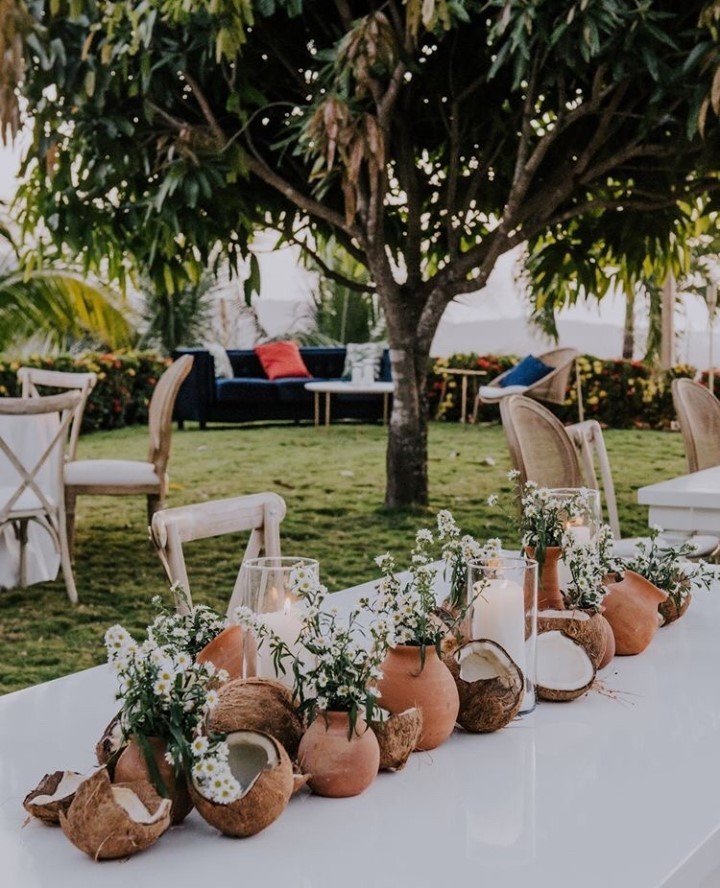Table of Contents
Goa, variously known as the “Pearl of the Orient” and a “Tourist Paradise” is located on the west coast of India in the Konkan region. It is India’s smallest state with the largest heart that attracts a multitudinous peaceful and cosmopolitan school of visitors from all around the globe. Goa is divided into two districts: North Goa & South Goa.
Brief History
- Goa, known in the bygone days as Gomanchala, Gopakapattam, Gopakapuri, Govapuri, Gomantak, etc abounds in a rich historical heritage.
- In the first century, Goa was a part of the Satavahana empire followed by the Kadamba, the Rashtrakutas of Malkhed, the Chalukyas and the Silharas.
- It was ruled for a long time by the Kadamba dynasty from the 2nd century CE to 1312 and by Muslim invaders of the Deccan from 1312 to 1367. The city was then annexed by the Hindu kingdom of Vijayanagar and was later conquered by the Bahmani Sultanate, which founded Old Goa on the island in 1440.
- In 1510, Alfonso de Albuquerque with the help of the emperor of Vijayanagar attacked and captured Goa.
- Goa becomes the capital of the whole Portuguese empire in Asia.
- Even after the independence of India, Goa continued to be in the hands of the Portuguese.
- However, they could not fulfil the aspirations of the Goa people and ultimately on 19th December 1961, Goa was liberated and made a composite territory with Daman & Diu.
- On 30th May 1987, Goa has conferred statehood and Daman & Diu was made a separate Union Territory.
State/District/Capital
Goa, an emerald land located on the West Coast of India in the Konkan region, is a major tourist attraction for domestic and foreign tourists as well. The capital of Goa is Panaji (Panji). It is the smallest state of India with an area of 3702 sq. km. Goa is divided into two major districts: North Goa and South Goa.
How to reach Goa?
- Goa is well connected by airline services to most major cities in India. All flights, national and international to and from Goa, operate from the Goa Airport of Dabolim (GOI) near the port town of Vasco-da-Gama.
- The airport is about 30 km from the capital city of Panaji and is owned by the Indian Navy.
- Besides these, a number of chartered flights land in Goa from other European countries.
- Air India, Air Arabia and Qatar Airways also operate a few international flights, especially from the Gulf countries.
By Train
- Margao (Konkan Railway Terminus) and Vasco-da-Gama (South Central Railway Terminus) are two major railway stations of Goa. Thivim is also an important station.
- Besides the two major stations, the trains usually halts for a few minutes at a number of other small stations in Goa.
- High-speed Konkan railways connects Goa to Mumbai in quickest and cheapest way and from there to all other parts of the country. Rajdhani Express, Poona Express and Jan Shatabdi express are other important trains.
By Road
- Well connected with all major towns in India via the National highways NH4-A, NH-17 and NH-17A. Highways roads are in excellent condition and motorable at fairly good speeds.
- Bus services operating to most towns and cities in neighbouring states at fairly regular intervals throughout the day.
- Bus service operated by the state: Kadamba Transport Corporation (white and blue buses).
- Kadamba bus stand at Panji is the Inter-state bus Terminal.
- Private bus operators also operates deluxe AC to sleeper coaches along these routes.
When to visit Goa?
- Goa is a 365 days destination, yet October to February is the best season to visit Goa.
- Between October and February, there are events like Christmas celebration, Diwali, New Year celebration, Carnival, Sunburn festival, etc.
- Moreover, this season is also climatically cool when there is no rain, humidity at its lowest and it is not too hot either. Hence, it is a more preferred time to visit Goa.
Official Language
The official language of Goa is Konkani & Marathi. English and Hindi are also spoken by a minority of the population.
Weather
- Summer Season: March to May
- Average Temperature: 27° to 30° C.
- Winter Season: December to February
- Average Temperature: 26° to 27° C.
- Monsoon Season: June to September
- Average Temperature: 26° to 28° C
- Post-Monsoon Season: October to November
- Average Temperature: 26° to 27° C.
Fairs & Festivals
Goa have celebrations & festivals throughout the year. The most famous of these are the Carnival and the Shigmo.

- Carnival: The festival of fun, frolic and music is celebrated just before lent in February/March. There are colourful parades in most cities with music and lavish floats. The uproarious festivities of three days are presided over by King Momo and a joyous feeling of Joe-de-Vivre is everywhere.
- Shigmo: It is essentially a festival of the masses celebrating the farewell to winter and arrival of spring corresponding with the Holi or spring festival held for one-week upto the full-moon day in the march. Various villages groups clad in their most colourful dresses set out with festive mood with multi-coloured clothes, flags, beating drums and blowing flutes to gather at the village temples and dance in the temple courtyard singing various folk songs to the beat of the drums.
There are also parades in most major Goa towns in which various folk groups attired in traditional costumes consisting of women and men dancers give vibrant performances of various dances.
Transportation/Stay to prefer

Generally Goa is equipped with double of its population with tourists which consists of mostly Indians one. But one can easily find a place for themselves and their interests in the small state. So Goa acts as a prime tourism spot as it offers glorious beaches, happy lifestyle, inviting bars, minimal pollution, manageable traffic and crowds, adventurous activities, spicy cuisine, water sports, very cheap alcohols and loosely-regulated nightclubs.
But to explore every possible opportunity you need a perfect location to stay so that there would neither be a burden on your budget nor waste of time which is a most precious thing of vacation.
The most popular beaches of North Goa are Calangute, Candolim and Baga. Close to the airport, walking distance from main road and availability of public transportation adds up to the reason behind their popularity. Hostels and resorts are easily available near beach for both luxurious and budget tourists. Ashwem (particularly wide and appealing area), Mandrem (comparatively remote but popular for yoga and meditation), and Arambol/Harmal (lagoon and ideal for fun surfing and paragliding). These are few more destinations that one can opt as per their choice.
Moving towards the Central Goa region historical monuments, Portuguese heritage and war memorial attracts another class of tourists who wants to escape from crowded beaches. Agonda (developed with a village vibe and good surfing), Palolem (scenic and popular for yoga and meditation), and Patnem (laidback, small and perfect match for long-stayers).
In case of Southern Goa, Betalbatim and Majorda are closer to the airport and well connected by public transportation to Margao. The area of Cavelossim offers attractive beaches and compact area equipped with luxurious facilities, while nearby Mobor has empty stretches of sand suitable for cycling and leisure, so tourists can get easy access of transportation and accommodation.
For local transportation, there is a wide range of choices available for tourists such as –
- Buses: The blue-white coloured bus can be easily seen on the roads of Goa which offers cheap and affordable services.
- Cycle/Bikes: Tourists who really wish to see the authenticity of Goa and feel the each and every moment of their stay can choose cycle or bikes available at various points or hire them with agencies. Available for few hours, or for full day.
- Taxi: Sharing as well as personal taxies can be hired for visiting the city. Packages of different ranges are available to choose.
Top places to visit in Goa

Heritage
- Panaji: The narrow by-lanes of the Latin Quarter proudly represent the city’s Portuguese heritage. The Odil shah’s palace in Goa’s oldest surviving building.
- Reis Magos: The quaint hamlet of Reis Magos (meaning three wise men) is home to two famous landmarks.: the Reis Magos Fort and the Reis Magos Church.
- Naval Aviation Museum: One of the two military museums in the country, it is the only aviation museum in Asia.
- Braganza House: Built in the 17th century, Braganza house is a magnificent Portuguese mission.
- Fort Aguada: Built to defend and protect old Goa from potential invasions. Fort Aguada is the largest and the best-preserved Portuguese bastion in the state.
- Goa Chitra Museum: It delves into the ancient culture of this state.
- Goa State Museum: The extensive collection at the museum includes exhibits related to the state’s natural heritage, contemporary art, cultural anthropology, environment and development, sculpture and geology.
Spiritual
- Basilica of Bom Jesus: A UNESCO World Heritage monument that houses the relics of St. Francis Xavier and is the only Basilica in Goa.
- Mahadev Temple: An excellent example of Jain-style architecture. It was built in the 12th century and is dedicated to Lord Shiva. It was renowned for its Mahashivratri celebration.
- Mahalasa Temple: The presiding deity, goddess Mahalasa is considered to be the female incarnation of Lord Vishnu.
- Church of St. Francis of Assisi: Remarkable blend of Portuguese-Manueline style and Tuscan style architecture.
- Mahalaxmi Temple: The presiding deity, Goddess Mahalaxmi wears a linga on her head.
- Manguesh Temple: Dedicated to Bhagwan Manguesh (an incarnation of Lord Shiva).
- Safa Masjid: The biggest and the most famous of the mosques in Goa.
- Se Cathedral: Largest church in Goa and the cathedral of the Archbishop of Goa.
- Shri Sapt-Koteshwar Temple: Ancient temple located in Narve, believed to have housed the deity of the Kadamba dynasty.
Natural

- Miramar Beach: Situated near the estuary of River Mandovi, it offers a stunning view of the Aguada Bay across the river.
- Anjuna Beach: renowned for its serene vistas of swaying palm, golden sand and the usual rock formations.
- Baga Beach: A bustling beach that is lined with beach shacks, vendors, restaurants and a host of companies offering adventure sport activities.
- Calangute Beach: Fondly called the Queen of Beaches by locals and one of the most popular beaches in Goa.
- Colva Beach: Boasting pristine white sands fringed by swaying palms and one of the most popular beaches in Goa.
- Palolem Beach: A white sand beach that overlooks a blue bay.
- Benaulim Beach: One of God’s quieter and more peaceful beaches.
- Vagator Beach: A crescent-shaped paradise situated on the Caisua Bay along Riber Chapora.
- Kesarval Falls: Renowned for its medicinal properties.
- Bhagwan Mahavir Wildlife Sanctuary: Nestled at the foothills of the Western Ghats, this sanctuary is spread across an area of 240 sq. km and is the largest of Goa’s wildlife reserves.
Cuisines to taste in Goa

- The food of this smallest state has an influence of Portuguese, Konkani and south Indian culture resulting in delicious local cuisine.
- The three basic necessity of life for a Goa people is fish, curry & rice.
- Goa food is simple but most, though not all, of it is chilli, hot and spicy. Items made from rice, fish and coconut abound in nearly every Goa meal.
- Goa cuisine, like the land itself, has many flavours and tastes with its vast treasure trove of culinary delicacies.
- It is influenced by its Hindu origins, four hunched years of Portuguese colonialism and modern techniques.
- North Goa is a paradise for foodies as one can find many pocket-friendly food outlets and restaurants to try out local delicacies.
- South Goa also has a few noteworthy restaurants for exclusive culinary experiences.
Popular Food of Goa
- Arroz Dace: Portuguese version of Kheer (sweetened rice made in milk).
- Balchaa: A curry based on a traditional sauce made shrimp, aguardiente, laurel, lemon and chilli.
- Bebil: Also called Bebinca, it is a pudding eaten during Christmas.
- Canja de Galinha: An original Goa dish made out of chicken & rice.
- Kismur: A side dish consisting of dried fish, usually mackerel or shrimps with coconut & onions.
- Sanna: Goa version of Idli.
- Salachi Kadi: A hot spicy coconut curry with Kokum.
- Uddamethi: A curry based dish with Fenugreek and Fish (usually mackerel).
- Vindaloo: A spicy curry where the name is derived from the Portuguese term for a garlic and wine marinade.
Things to do in Goa
Goa is a place with limitless chances to have entertainment and fun and this place would enthral every adventure lover. Though it is known as the land of beaches, tourists from all over the world find it as a great spot for indulging in many breathtaking activities in water as well as on land.
Majority of the activities is associated with the beaches and the Arabian Sea yet some other activities are restricted to the off-beat tracks and jungles located around the beaches. Dudhsagar Waterfall visit, Bhagwan Mahaveer Sanctuary visit, Spice Village visit etc are examples for those activities done far away from the clutches of the extensive beaches in Goa.

Few activities are:
- Water Sports
- Scuba Diving at Grande Island
- Partying at Tito’s Street
- Visit to Dudhsagar Falls
- Mandovi River Sunset Cruise
- Visit Anjuna Flea Market
- Casino Royale
- Baga Beach
- Visit the Basilica of Bom Jesus
- Aguada Fort
- Cycling At Divar And Chorao Islands
- Take a Hot Air Balloon Flight
- Candolim Beach
- Explore Bhagwan Mahaveer Sanctuary
- Dolphin Ride and many more.
Souvenir to buy

- Coconut Decor: Goa is a coconut-y terrain so it is available in abundance as a result locals have engaged themselves in designing creative items from raw as well as used one. A perfect gifting option and a souvenir to take away.
- Feni or Cabo: The cashew feni and coconut feni are two options available and are authentic Goan products and pride. A delicious white rum offered in a beautiful bottle which itself is a souvenir.
- Azulejos Tiles: At a cost of around ₹100 you can find these beautiful tiles all around in Goa which has an own story to tell and nothing can describe Goa better than this. One can get them customized as per their needs, design and sizes.
- Kunbi Sarees: Mostly red in colour cotton saree having large checks designed by tribes of Goa are a great gifting option for women.
- T-shirt and Beachwear: Goa is known for its fashion and lifestyle which is represented by graffiti tees and gives a beachy vibes. Starting from ₹100 tourists can buy beautiful cotton tees and from ₹500 beachwear. Tourists can easily spot the shops near beaches and in main markets too.
You can also pick up other essentials like magnets, booze, bread, hats, keychains, kokum seeds, cashews, seashells, bags and so much more from Goa.
(Travel Xamp is now on Telegram. Join our Telegram by clicking here to get all the travel hacks, destinations, blogs and travel news for free!)

One Response